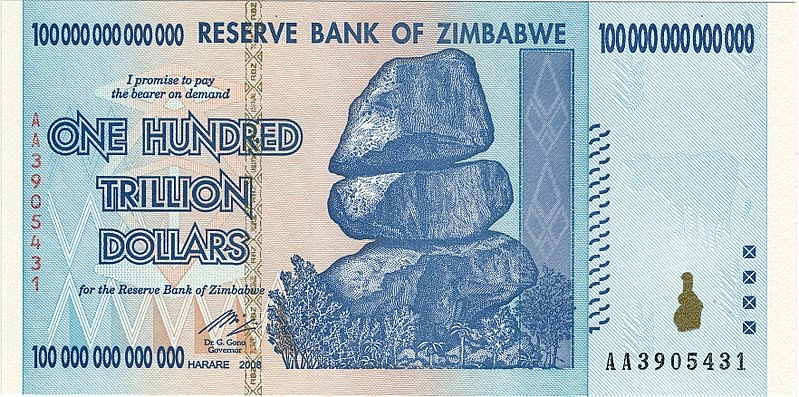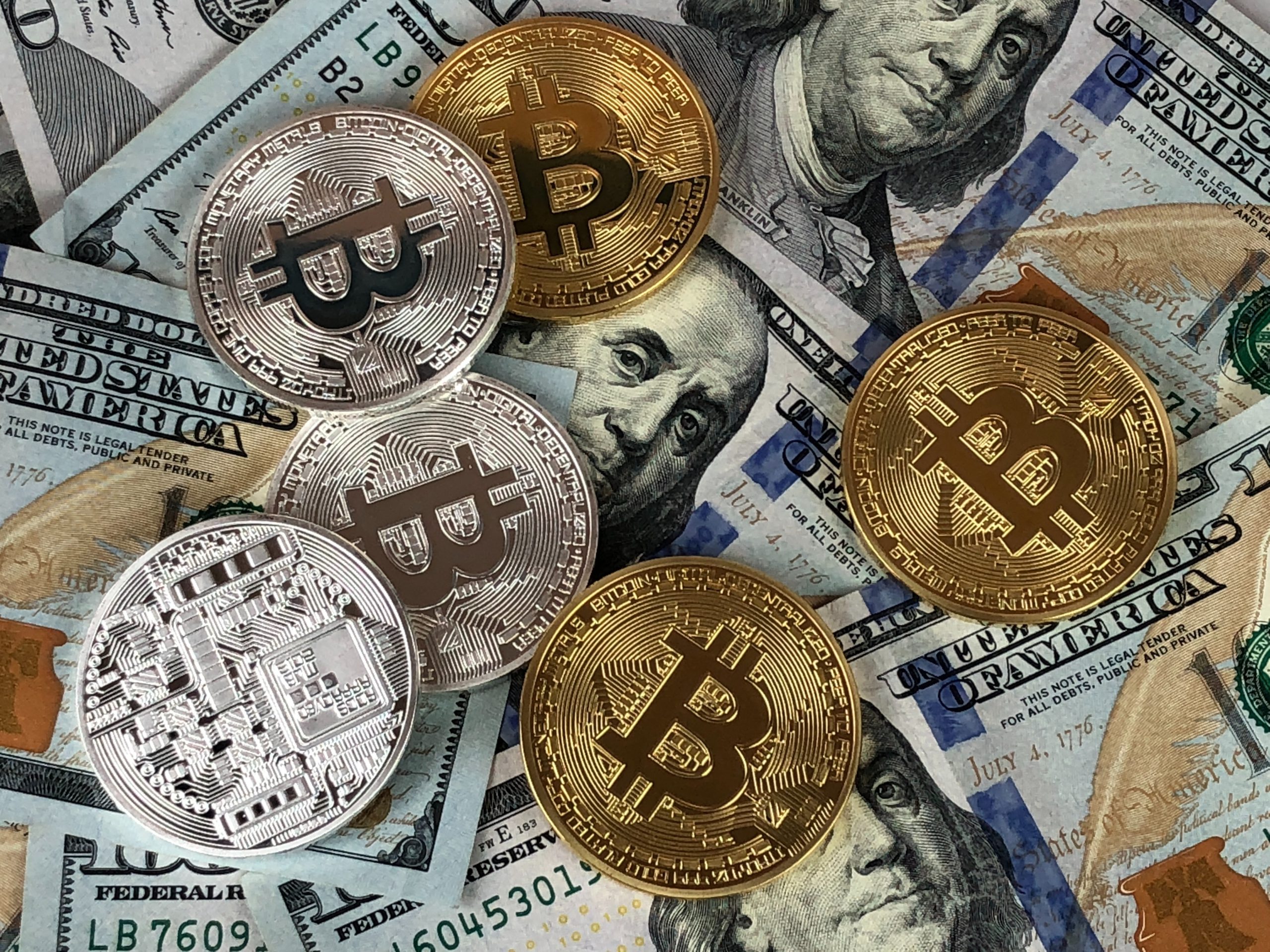In my first and second part, I had explained what money is and brief history of Money. Money and currency have all the same characteristics except money is a store of value, whereas currency isn’t. A thousand dollar bill won’t buy the same amount of goods that it used to buy 30 or 40 years back, it has been consistently losing its value and might do so going forward, whereas money is something that stores your value, it isn’t something that can be created just out of thin air. Since 1971 you have been holding currency in your hand which has been losing value quite since then. Fiat currency lacks intrinsic value and is not backed by anything except people’s faith in it.
The US Dollar has been able to maintain its foothold as the reserve currency of the world for more than 50 years. Gold, Oil and various other major commodities are priced in US dollars; even the majority of international trade is performed through US dollars. In addition to European economies, many countries had gained prominence since the past couple of decades, be it Russian ruble, Chinese Yuan, Japanese Yen, Indian Rupees. With growing economies and growing share in world trade, many of these countries were a bit sceptical of the dollar as a reserve currency. You might agree the US didn’t have amicable relations with many of these countries.
- October 28, 2008: Interfax reports that Vladimir Putin, prime minister of Russia, advised Wen Jiabao, premier of China, to abandon the US dollar as a transaction and reserve currency.
- November 15, 2008: The Associated Press reports that Iran has converted its financial reserves into gold.
- February 9, 2009: The Financial Times reports that transactions in gold bullion have reached a record high.
- March 18, 2009: Reuters reports that the United Nations Russia and China are cooperating on the creation of a new global currency.
- March 31, 2009: The Financial Times reports that China and Argentina have entered into a currency swap, which would allow Argentina to use Chinese yuan in lieu of dollars.
- May 18, 2009: The Financial Times reports Brazil and China have agreed to explore conducting bilateral trade without using dollars.
- June 16, 2009: Reuters reports that Brazil, Russia, India and China, at a BRIC summit, call for a more “diversified, stable and predictable currency system.”
- November 3, 2009: Bloomberg reports that India has purchased $6.7 billion worth of IMF gold to diversify assets away from the weaker dollar.
- November 7, 2010: World Bank president Robert Zoellick states that the G20 should “consider employing gold as an international reference point of market expectations about inflation, deflation and future currency values.”
- December 13, 2010: French President Nicolas Sarkozy calls for the consideration of a broader role for SDRs in the international monetary system.
- December 15, 2010: BusinessWeek reports that China and Russia have jointly called for the dollar’s role in world trade to be diminished and are launching a yuan-ruble trade currency settlement mechanism.
These are few of the instances wherein economies like China, Russia, Brazil and others are trying to replace the dollar as a reserve currency.
Money Printers Go Brrrrr….
When an economy gets into a recessionary phase, economic activity starts slowing down and demand decreases, the role of the government and Country’s Central bank is to revive the economy by using certain guns in its arsenal. The central bank might reduce interest rates so that lending becomes cheap and people would start borrowing and would spend, and the government would cut taxes, what if this isn’t enough and both the central bank and government have utilised their means. Many Countries in this situation would start printing money which is done by the central bank and it hands the money over to the government, it is like a loan given by the central bank to the government so that it can spend on various welfare and economic upliftment programs. Government is spending more than it earns by borrowing which is known as deficit spending. This happened in Germany after World War One, in Greece and Hungary after World War Two, in Zimbabwe due to government mismanagement and it didn’t end well for these countries. Printing of Money to revive the economy, to pay off debts leads to hyperinflation; prices of goods and services were doubling every few days, and the currencies collapsed.


After the Global Financial Crisis, the Federal Reserve lowered rates close to zero, which hasn’t happened for more than 75 years. Now all that was left with the Fed was to print money which it was doing beforehand but it was the exponential flow of money that was flowing through the markets. Fed Reserve Chairman Ben Bernanke announced rounds of Quantitative Easing- (Just a fancy term for printing money). Fed printed billions of dollars per day just so it can get out of the recessionary phase that it was in. The amount of money printed was flowing through the international markets and found its way to many emerging economies. China had a trade surplus of more than 200 Billion Dollars with the US and it had a policy of maintaining a fixed exchange rate with US, so when the dollars were being printed and circulated, US currency was likely to be depreciated and this would have a negative effect on Chinese exports to US. So Even People’s Bank of China Started Printing money, which led to inflation and the prices of goods rose. The US was happy either way; if it hadn’t been through inflation, it would have been through revaluation. This was not the case not only in China but also in many other emerging markets like South Korea, Brazil, Indonesia, and Thailand and even in India.
The Problem of velocity
“Inflation is always and everywhere a monetary phenomenon”
Milton Friedman
Friedman was an American economist who was responsible for the popularisation of the quantity theory of money, which states that general price level of goods and services in an economy is directly proportional to the amount of money in circulation. This idea was formulated in an equation:
MV=PY
Wherein M stands for the Money supply, V stands for Velocity, P and Y stand for Price level and real GDP respectively.
Real growth in an economy is related to the productivity of labour and the amount of labour in an economy. Suppose the productivity increases by 1% and the population increases by 2% amounting to 3% real growth. If the money supply too increased by 3% assuming Velocity is constant, the price level would be stable throughout. So as long as central bankers are printing money in accordance with the real growth then it won’t make much difference on inflation. The main catch here is Velocity which doesn’t stay constant. Velocity is the average frequency with which a unit of currency is spent in an economy. Velocity which is psychological cannot be controlled by the Federal Reserve and has been on a downhill since the late 1990s. Even though the money supply in the economy has increased there hasn’t been much effect on inflation with low real GDP growth rates. The Fed does not even control the majority of the broader money supply; it all depends on banks when they make loans and invest, that is through fractional reserve lending.
Deflation- Blooming fear for Virus Plagued Economies
In the pending fear of health risk due to Covid-19, Economic risk is also another major concern. The US has been the worst hit and is under lockdown for more than a month. Unemployment rates are rising, GDP numbers are abysmal, and the Worst is yet to come. The economic stimulus of 2 trillion has been announced, and the Fed has pledged unlimited asset purchases. The US has been under a fiscal deficit for more than ten years, and this year’s fiscal deficit is expected to hit an all-time high of 15% of GDP. The Problem with the US isn’t the money supply, rather the Velocity, which is psychological. More than 30 million people have lost jobs in the US, and this would lead to decreased spending, decrease in business investment and decrease in asset prices which might start a chain of defaults, bankruptcies, resulting in loss of confidence and deepening of deflation.
Printing money won’t stop this; it would just create bigger and bigger asset bubbles which might make things even worse. The US has turned from Creditor nation to Debtor nation; this means foreign countries own more of US assets than the US owns foreign country’s assets, unlike during the Great depression. The bigger the debt bubble the country creates, the greater will be the consequences it will have to face.








No comment yet, add your voice below!